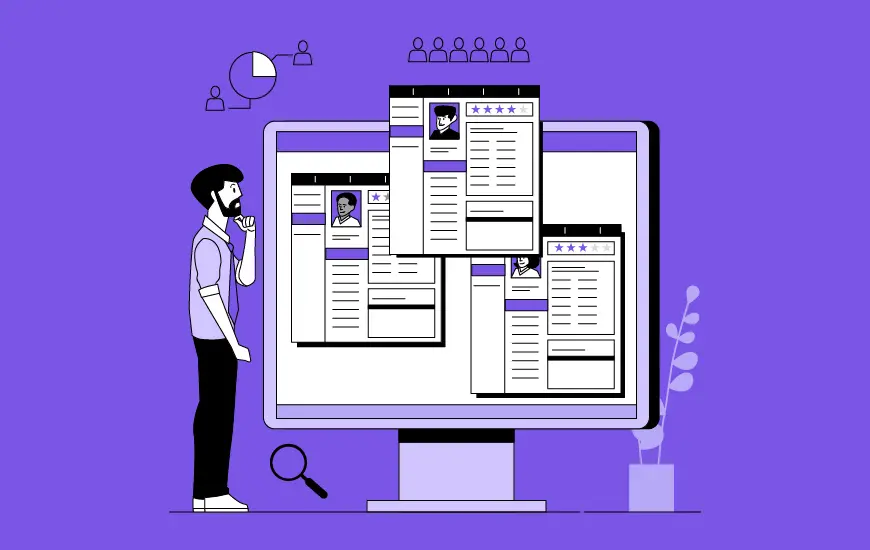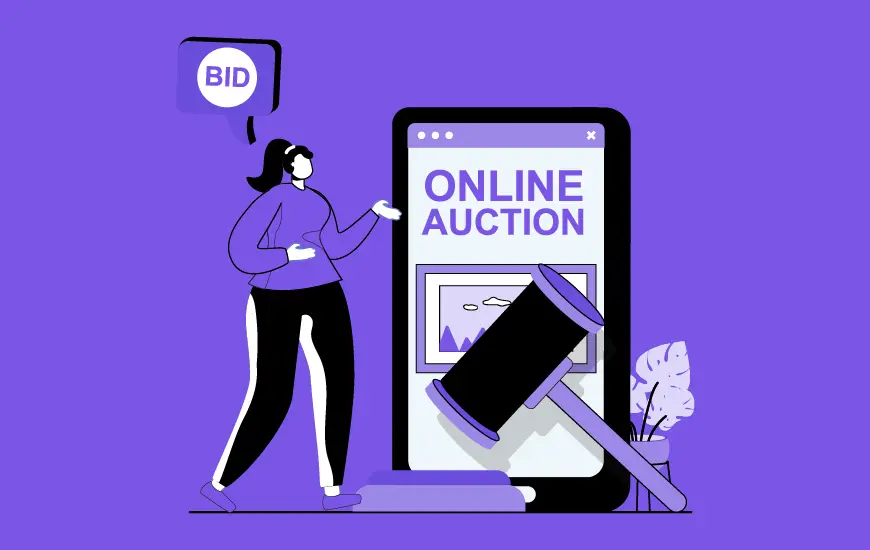There are a number of factors that have laid out both the existence of the On Demand apps and their future. All of those factors from convenience, timeliness, cost effectiveness, and quality, to easy payment and availability of service providers that define the basis of On Demand market can be traced back to one thing: lack of time in the era of technology.
Today, we don’t have the time to visit a salon, go grocery shopping, wait for taxis, and so many other tasks that we keep pushing for tomorrow – this lack of time is what has been fuelling the growth in on-demand app industry. The fact that on-demand app development services offer convenience across all customer touch point from quick decision, accessibility, and ease in transaction to post purchase benefit, has made the industry grow to such an extent that it has today become one of the most invested-in economies globally.
 The On Demand App Market
The On Demand App Market
With every passing day, the On Demand market is crossing its current standing of more than 22.4 million annual consumers and over $57.6 billion that are spent yearly for their services. The chief category of on-demand expenditure is being witnessed by the online marketplaces like Etsy and Ebay, with them having over 16.3 million monthly consumers spending to around $36 billion yearly.
After Online Marketplaces, Transportation comes in next with its 7.3 million monthly consumers and $5.6 billion estimated in name of yearly spendings, followed by the grocery/ food delivery apps with at 5.5 million consumers using the services in a month and spending over $4.6 billion yearly.
Other on-demand facilities such as home services, freelancer services, and beauty and health services measure up to $8.1 billion in expenditure every year, with every other On Demand service under the sun coming at $3.8 billion valuation.
So you see how On Demand apps are making businesses better and how it’s time for brands to operate and grow in the service industry to be accessible On Demand? Let us now take you to the technicalities of the market just so you are prepared to enter in it yourself, with the help of knowledge that we have acquired after developing a series of top ranking On Demand Service Apps.
How we make On-Demand Apps Work? The Technology Stack
Let’s concisely review how On Demand apps work (Even though I am quite sure you already know).
So, you order something – ride/food/grocery/service and your app then connects you to the nearest service provider, by checking your location, and they reach you. Then the experience cycle ends with you making a payment to them, if not prepaid, and dropping a review and feedback for the service you received.
While this is what happens on the face value, have you ever thought what happens in the background? What technology we app developers use to make this all possible?
Let me tell you the features that are prevalent in every one of ours and the other On Demand apps all over the world –
Geolocation
On Demand apps have settled themselves as belonging to the Location Based Service family. While it was once complex to design technology that would read your device and connect with all the devices that belonged to serve your demand, thankfully you are reading this article in 2017, when the technological world has evolved so much that it is now easy to develop a mechanism that has converted the once complex process in one that solves your purpose within minutes.
You will no more have to get stuck in the technology mesh. You will get all the information in this article, which will help you create an Uber like app for yourself.
Identify location of the device
When it comes to identifying the location of a device, there are two things that users do – A. They order service for themselves and B. They order service for someone else. Now when ordering service for themselves (A. Scenario) we use embed Reverse Geo Coding, when users manually enter their location and we embed Geo Coding, when user wants Google to fetch the location for them.
In Scenario B, when users are ordering service for location that is different from their device’s location, we use Google Map integration.
Many of the iPhone app development companies like us, use the CoreLocation Framework to identify the specific location of a device. The same framework sends protocols and classes to construct and schedule the location delivery before sending location events in server’s direction. The framework also enables Uber in defining the geographic areas and then monitor device’s movements when it passes the defined boundaries.
While the iOS developers use CoreLocation Framework to track location, Android’s On Demand app developers use Google’s Location APIs. They can intelligently manage underlying location technology while meeting various development needs when implementing location-based features.
- Navigation
To show precise point-by-point directions on the map that is in the app, iOS developers of On Demand apps use MapKit. They first register the app as routing app, which then makes the directions accessible to the mapping software and Maps app in the user’s device.
The directions and routes for Android On Demand apps are given with the help of Google Service API.
SMS and Notifications
Once you order a ride or food online, you must have noticed that your On Demand service providers sends a couple of push notifications and SMS. Brands like Uber powers their text messages with their association to the premium telecommunications provider – Twilio.
For the iOS On Demand apps, developers generally make use of the Apple Push Notifications Service, while the Android apps’ notifications work at the back of Google Cloud Messaging (GCM).
The Catch –
APNS or Apple Push Notifications Service work in an online mode that means if for some reason your device is out of reach, you won’t be able to get the push notification. Because it’s fairly uni-directional, it is difficult to know if and when the user received notification. While APNS relies on network, GCM doesn’t. It lets you monitor the notification status.
Payment Gateway Integration
Payment integration setup is based on two scenarios, one where there is price is fixed by the provider at a company level and one where the service providers fix their price on an individual tasker level. In the first scenario, we use fix price integration and in the second where individual service providers or Taskers bid for the service, we use Bidding Integration.
If your app is based on cashless transactions, there are a number of requirements that you will have to fulfill. These compliances are known as PCI requirements in the US. In addition to adhering to the PCI compliances, The Payment Card Industry Data Security Standards (PCI DSS), which are a collection of requirements that are designed to make sure that companies, which store, process, or communicate credit card information, should maintain a protected environment. This compliance has to be applied to any merchant who has the Merchant ID (MID).
For payment integration, Uber has chosen to collaborate with Braintree, who is a leading name in mobile payment industry, for card transactions. In our On Demand apps, we make use of both Stripe and Braintree to ensure safe transaction and secure data collection.
Offer Redemption
On Demand industry works, to a great extent, at the back of the discount and offers it gives to its users to stand out of the competition. Now how do you ensure that one user is not entering the promotional code twice?
We have been making use of the DeviceCheck API framework in combination with the server-to-server APIs to identify devices that have already redeemed an offer and to flag the ones that are doing something fraudulent in the app.
The Market Leaders

The Best Practices – Uber Way
There are some practices that on demand leaders use to keep their customers hooked to their apps, here’s their sneak peek which you can use to make your customers keep coming back –
- Machine Learning
Brands use Machine Learning tools to know how users are behaving and interacting with the apps in order to deliver better service to them. While Uber has developed its own pattern, there are some food delivery apps that make use of API.AI tool to find out how users are interacting within the app.
- Loyalty Program
To keep your users from leaving your app or worse cutting you off by making deals with the restaurant or helpers you have associated with, introduce loyalty programs in your app. Give reasons for users to stick with you for their service fulfillment needs.
- Promotions
World’s memory span is very low. Their behavior while dealing with on-demand services reflects nothing else. In order to make a place in their conscious memory, you will have to keep introducing new discounts, offers, and advertisements along every media that they use.
- Unseen Events
Keep a tab on unseen circumstances that are more often than not missed by companies when developing on demand apps by themselves.
Things like Cancellations, Conflict in Services, Refund, and Settlement are a few of those unwanted but highly probable events that can shape an image for your brand, it’s best if you have a mechanism in place for them.
How much does it cost to create an On Demand App?
When you make an On Demand app, you don’t make just one for the users, you make two to three apps depending on the industry.
Suppose you are making an Uber like App, you will be making apps for the user and the driver. If making the app for online grocery or food delivery, you will need three versions one each for restaurant, user, and the delivery person.
Either way, when planning to develop an On Demand app, irrespective of the type, you will have to pay for the following services –
- Backend development
- Android and iOS native app development
- Project management
- Web development
- Quality assurance
- Design
While this list of points is just for the main services, there are a number of features like payment integration, tracking of promo offers, and various others could get added over and above the cost. Now, coming to the question, how much does On demand food delivery, medicine delivery or grocery delivery app development costs, there is no one answer.
It entirely depends on your app developer, the features that you need in your app, and the facilities you need beyond development, such as marketing or App Store publishing etc.
If you want to know the estimate of your On Demand app idea, contact us.
For more information on how to develop On Demand apps, what are the absolute necessities and how you can be helped by getting associated with us, check out – https://appinventiv.com/on-demand-app-development.



How Much Does It Cost to Build a Job Portal like Bayt?
In a landscape rife with challenges, the job industry struggles with issues such as skills shortages, fierce competition, and the ever-changing demands of the market. However, the emergence of platforms like Bayt has provided a lifeline for businesses. Bayt transcends the limitations of traditional recruitment by providing businesses with an innovative talent pool. Leveraging advanced…

How Much Does It Cost to Build a Job Portal like Glassdoor?
In the wake of the COVID-19 pandemic, the recruiting industry saw a dramatic change. It has caused many organizations to lose their projects and businesses to shut down, causing many employees to lose their job roles worldwide. In such a scenario finding a suitable job or recruiting the right talent has become one of the…









